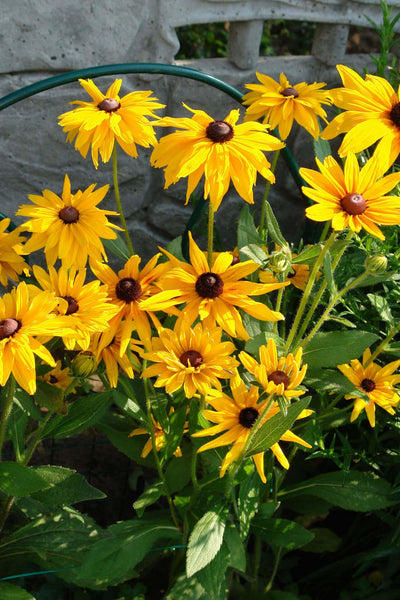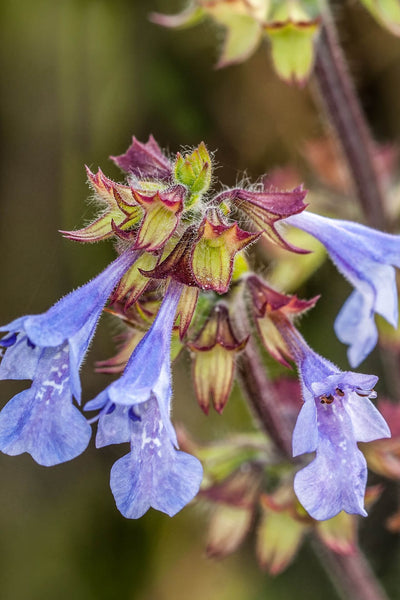10 Best Low-Maintenance Perennials
Introduction: Landscaping with perennials is a fantastic way to create a vibrant and ever-changing outdoor space without the constant need for replanting. Perennials are plants that return year after year, offering your garden a reliable source of color, texture, and beauty. Selecting the right perennials is vital for designing a low-maintenance landscape. This article explores the top 10 low-maintenance landscaping perennials that can thrive with minimal care while delivering a stunning visual impact.
Lavender (Lavandula spp.):
Known for its aromatic fragrance and delicate purple blooms, lavender is a popular choice for low-maintenance landscapes. Once established, lavender requires little water and is highly resistant to pests and diseases. Its silver-green foliage adds texture to the garden and can be used for edging, borders, or even in containers.
Sedum (Sedum spp.):
Sedums, commonly known as stone crops, are versatile perennials in various colors and forms. They are drought-tolerant, making them ideal for xeriscaping. Sedums require minimal pruning and can thrive in poor soil conditions. Their succulent leaves store water, allowing them to endure dry periods.
Black-Eyed Susan (Rudbeckia spp.):
Black-eyed Susan's add color to any landscape with their golden-yellow petals and distinctive dark centers. These tough perennials can tolerate various soil types and are relatively pest-resistant. They attract pollinators and birds, further enhancing the biodiversity of your garden.
Daylily (Hemerocallis spp.):
Daylilies are renowned for their ability to bloom profusely with minimal care. Available in a wide range of colors, these perennials are reliable and low-maintenance. They can adapt to different soil conditions and require occasional deadheading to promote continuous flowering.
Russian Sage (Perovskia atriplicifolia):
Russian sage is a hardy perennial with grayish-green foliage and tall, airy spikes of lavender-blue flowers. It's well-suited for hot and dry climates, as it's drought-tolerant once established. Russian sage requires little pruning, and its aromatic leaves deter deer and rabbits.
Hosta (Hosta spp.):
Hosta's are an excellent choice for shady areas. These leafy perennials come in various sizes and foliage colors, adding texture and interest to the landscape. Hosta's require minimal maintenance, occasional dividing, and protection from slugs and snails.
Yarrow (Achillea millefolium):
Yarrow is a tough perennial that produces flat clusters of tiny flowers in white, pink, or yellow shades. It's drought-tolerant and can thrive in poor soils. Yarrow's feathery foliage adds a delicate touch to garden beds, and its flowers attract beneficial insects.
Catmint (Nepeta spp.):
Catmint is a mint family member known for its aromatic leaves and clusters of lavender-blue flowers. It's a favorite among pollinators, including butterflies, and is resistant to deer and rabbits. Catmint requires minimal care and can even tolerate some neglect.
Coreopsis (Coreopsis spp.):
Coreopsis, also known as tickseed, features bright and cheerful daisy-like flowers in various colors, including yellow, pink, and red. These perennials are sun-loving and can tolerate dry conditions. Coreopsis is a reliable bloomer that adds color to borders and containers.
Incorporating low-maintenance perennials into your landscaping design can save you time while creating a visually stunning and dynamic outdoor space.
From the soothing fragrance of lavender to the vibrant blooms of coneflowers, these ten perennials offer a range of colors, textures, and forms to suit any garden style. Whether you're a seasoned gardener or a beginner, these low-maintenance landscaping perennials will surely enhance your outdoor experience for years.
Creating and maintaining a captivating landscape is a desire many homeowners and outdoor enthusiasts share. However, pursuing an aesthetically pleasing outdoor space comes with the burden of constant care and maintenance. It is where the allure of low-maintenance perennials comes into play, offering a sustainable and practical solution for achieving a beautiful landscape without the hassle. This discussion will explore the benefits and considerations of incorporating low-maintenance perennials into your landscape. They are a wise choice for creating a stunning and effortless outdoor environment.
Low-maintenance perennials, distinguished by their ability to thrive with minimal intervention, have gained popularity for several reasons. One of the most significant advantages is their ability to withstand changing weather conditions and fluctuations in water availability. Unlike annual plants that require frequent replanting, perennials return year after year, establishing deep root systems that allow them to access moisture stored in the soil. This adaptability reduces the need for constant irrigation and promotes water conservation—an essential aspect of sustainable landscaping.
Furthermore, the time and effort invested in cultivating a garden can often be a limiting factor for many homeowners. Low-maintenance perennials alleviate this concern by demanding less attention regarding pruning, fertilizing, and pest control. Once established, these plants demonstrate resilience against pests and diseases, minimizing the need for chemical interventions. Their autonomous nature reduces the demand for constant monitoring, allowing homeowners to enjoy their outdoor space without the perpetual worry of plant care.
However, incorporating low-maintenance perennials into your landscape requires thoughtful planning and consideration.
Selecting suitable plant species that are well-suited to your local climate, soil type, and sunlight availability is essential. Conducting thorough research or seeking advice from local gardening experts can aid in making informed choices that ensure the success of your landscaping endeavor. Proper spacing, grouping, and layering of plants are also crucial to creating a visually appealing design that minimizes competition for resources and maximizes growth potential.
In conclusion, integrating low-maintenance perennials into your landscape offers many benefits that align with the modern homeowner's desire for beauty and practicality. These resilient plants reduce the demand for constant care and contribute to water conservation, sustainability, and financial savings. Their adaptability to various environmental conditions and ability to withstand pests and diseases make them an excellent choice.
By carefully selecting appropriate plant species, understanding their growth requirements, and considering design aesthetics, homeowners can achieve a landscape that marries natural beauty with the ease of maintenance. Ultimately, the decision to incorporate low-maintenance perennials represents a thoughtful and prudent approach to landscaping—allowing individuals to revel in the splendor of their surroundings without being burdened by continuous upkeep. As the seasons change, these perennials testify to the wisdom of choosing a sustainable and enduring landscaping solution.




